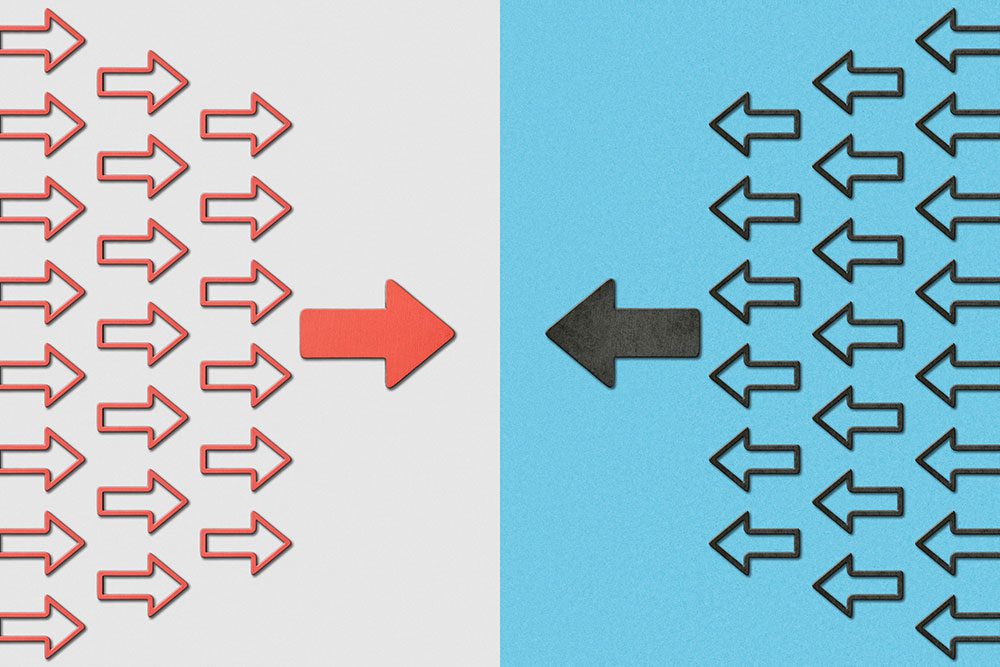1- Introduction to Behavioral Targeting
Consumers are constantly inundated with marketing messages in today’s fast-paced, hyperconnected digital world. Advertisements are present in almost every part of our online lives, from email inboxes and social media feeds to streaming services and mobile apps. Just getting noticed is no longer sufficient for brands in such a setting. Being visible is only the first step. Making sure the right person sees the right message at the right time is the true challenge of relevance. This is where behavioral targeting, a revolutionary tactic in contemporary marketing, comes into play.
In contrast to conventional advertising techniques, which frequently depend on demographic data like age, gender, or location, behavioral targeting focuses on user behavior, which is what matters most in the digital age. It allows marketers to interact with users according to their interests, preferences, and actions in real time, going beyond static categories. By offering a degree of personalization that seems natural and relatable, behavioral targeting gives the appearance that a company not only knows but also comprehends its target market. Casual browsers become devoted customers because of this feeling of recognition and relevance.
The idea is simple in theory but powerful in practice. Brands can start to develop an understanding of consumers’ needs and intentions by examining how they use digital platforms, including what they click on, what they search for, how frequently they visit particular pages, and what kind of content they consume. This behavioral insight turns marketing into a science rather than a guessing game. Behavioral targeting enables brands to create experiences that are unique to each person rather than delivering the same message to everyone. This increases engagement, boosts conversions, and creates enduring relationships.
Better outcomes are only one aspect of behavioral targeting, though; it also represents a larger cultural and technological change in how customers engage with brands. Users of today demand customization. They seek recommendations and content that suit their particular tastes and habits. They’re used to Amazon suggesting things they didn’t even know they needed or Netflix’s algorithm figuring out what to recommend next. Industry-wide marketing conventions are being shaped by these expectations. Behavioral targeting is now more than just a competitive advantage; it is a necessary component of competing in a world that prioritizes digitalization.
As we delve deeper into the subject, we’ll examine behavioral targeting’s definition, operation, significance, and responsible and efficient use by marketers. To start, though, we must first establish the fundamental question: what is behavioral targeting, and how is it different from earlier marketing strategies?

Definition and Core Concepts- What is Behavioral Targeting?
Fundamentally, behavioral targeting is a marketing strategy that uses user behavior tracking, typically online, to provide more relevant and individualized content or ads. Behavioral targeting uses observed behavior to guide marketing decisions rather than making educated guesses about what a user might want based on generalizations or generic categories. To put it simply, it involves making the connection between a user’s actions and their likely desires, then adjusting messages accordingly.
Take, for instance, a user who spends a few minutes on a travel website reading articles about beach vacations, then clicks on the cost of flights to Hawaii but chooses not to book. After a week, the same user begins to see advertisements for cheap tropical vacation packages. This is an example of behavioral targeting. After identifying a pattern in the user’s behavior, the marketing system sent a tailored message that matched their expressed interests and possible intent.
The dynamic nature of behavioral targeting sets it apart from more conventional targeting strategies. Conventional targeting frequently uses static data, like location, age, or gender, which is rarely updated and provides little indication of current intent. Conversely, behavioral targeting is flexible and adaptable. Real-time tracking of user behavior allows it to adjust to changing user preferences and journeys. This enables highly targeted segmentation and timely, individualized messaging.
Behavioral targeting is based on a number of fundamental ideas. Data collection comes first. Systems for behavioral targeting collect information from multiple digital touchpoints. Search queries, clicks, scrolling patterns, video engagement, downloads, cart activity, website visits, page views, time spent on the site, and more are all included in this. Every action a user takes online could be interpreted as a sign of interest, intent, or preference.
The idea of segmentation comes next. Users are categorized into behavioral segments using the data that has been gathered. These groups are based on what users do rather than who they are. For instance, some users may be classified as “window shoppers” if they frequently browse without making a purchase, while others may be classified as “loyal customers” or “abandoned cart users” based on their purchasing habits.
Personalization is another fundamental concept. Ads, landing pages, app experiences, email content, and product recommendations can all be personalized by marketers using segmented user profiles and behavioral data. Frequently carried out in real-time, this personalization produces dynamic content that changes according to a user’s most recent activities.

The difference between first-party and third-party behavioral data is also important to comprehend. A brand gathers first-party data directly from its own platforms, such as its website, app, CRM, or customer surveys. Usually, this data is more accurate and complies with privacy laws. Conversely, third-party data is compiled from outside sources like advertising networks and data brokers. Although it’s becoming more regulated and scrutinized, it gives marketers the ability to monitor user behavior across various platforms and websites, providing a more complete behavioral profile.
Another well-known use of behavioral targeting is retargeting. Serving advertisements to consumers who have already interacted with a brand but have not completed a desired action, like making a purchase, is known as retargeting. Because it concentrates on warm leads—people who have already expressed interest—it is among the most successful types of behavioral targeting.
Enhancing performance and relevance is the ultimate aim of behavioral targeting. A user is much more likely to interact with a message that feels relevant to their needs or interests. Stronger conversion rates, increased click-through rates, and improved return on investment (ROI) are the results of this. However, behavioral targeting improves relationships in ways that go beyond the numbers. It creates experiences where users feel understood, not interrupted. Instead of being the object of a hard sell, they feel like they are a part of a dialogue.
The sophistication of behavioral targeting will advance in tandem with the ongoing changes in the digital landscape. The capacity to decipher behavior and provide pertinent experiences will only grow stronger with the development of artificial intelligence, machine learning, and real-time data analysis. However, it also brings up new concerns about data ethics, consent, and privacy, which we’ll discuss in more detail in later sections.
For the time being, it’s critical to realize that behavioral targeting signifies a paradigm change. It changes the way that brands interact with their audiences, treating them more like individuals with distinct journeys rather than as nameless masses. And it accomplishes this by transforming behavior into the most important marketing signal available.

Importance in Modern Marketing- Why Behavioral Targeting Matters in the Digital Age
The hyper-personalization era is upon us. Today’s consumers are more knowledgeable, powerful, and picky than ever. They expect experiences that are instantaneous, seamless, and pertinent. Behavioral targeting is crucial in this situation, not just significant. It is the driving force behind contemporary marketing’s assurance that the appropriate message will be sent to the appropriate individual at the appropriate moment.
The fact that behavioral targeting tackles the weariness and annoyance that frequently accompany irrelevant advertising is one of the main reasons it is so important. Showing advertisements that don’t fit with a customer’s needs or interests is one of the most alienating things they can experience. By helping marketers understand what a user truly wants and then providing content that reflects that understanding, behavioral targeting helps to lessen this mismatch.
Furthermore, behavioral targeting significantly improves marketing campaigns’ efficacy and efficiency. Marketers can improve ROI and cut down on wasted ad spend by focusing on users who are more likely to convert. Conventional advertising campaigns that target large audiences frequently have low engagement and high bounce rates. On the other hand, users who are already displaying signs of interest—such as perusing product pages, signing up for newsletters, or engaging with relevant content—are reached by behaviorally targeted advertising.

Deeper audience segmentation is also made possible by this accuracy. By using behavioral targeting, users can be grouped according to specific characteristics, such as the frequency of visits, the kinds of content they consume, or even emotional triggers deduced from interaction style, rather than being grouped into broad, generalized categories (e.g., “millennials in urban areas”). Customized messaging, such as personalized email flows that represent a user’s journey or distinctive product recommendations, is made possible by this segmentation.
Additionally, behavioral targeting is essential for improving client retention. Maintaining the interest of current users is just as important as gaining new ones. Brands can take proactive measures to rekindle interest and loyalty by monitoring and reacting to behavioral cues, such as decreasing engagement, decreased frequency of purchases, or shifts in content consumption.
Most significantly, behavioral targeting enables companies to establish deeper connections with their customers. Demonstrating that you comprehend and value your customers’ needs can set you apart in a time when authenticity and trust are crucial. The concept that a brand is paying attention—and that attention translates into value—is reinforced when behavioral targeting is carried out in an ethical and open manner.

How Behavioral Targeting Works- The Technology and Processes Behind It
A tailored content recommendation or personalized advertisement may appear to the untrained eye to be a digital coincidence—an odd, possibly invasive, flash of relevance. However, a sophisticated and ever-changing technological infrastructure that interprets user behavior and converts it into useful insights is what powers these tailored experiences. Behavioral targeting is more than just displaying advertisements based on conjecture. To deliver the most pertinent message to each user, a methodical process driven by data collection, segmentation, predictive modeling, and automated execution comes together. One gains a greater understanding of the complexity of contemporary marketing by comprehending how this process operates.
The first step in the process is data collection, which is the cornerstone of behavioral targeting. Digital breadcrumbs—signals indicating intent, interest, or engagement—are left behind by every online user interaction. A variety of instruments and technologies are used to record these breadcrumbs. The browser cookie, a tiny file saved on a user’s device that records browsing activity, is one of the most popular tools. Cookies have the ability to track which pages a user has visited, how long they have been there, whether they have clicked on particular elements, and whether they have visited a website more than once. Pixel tags, which are tiny, undetectable images incorporated into emails or web pages, work as beacons in addition to cookies to verify when a user has viewed or interacted with a message. Without interfering with the user experience, these technologies silently and continuously gather real-time data.
Mobile device identifiers, which allow tracking across mobile apps, and device fingerprinting, which can recognize and distinguish users even if they delete their cookies or switch browsers, are examples of more sophisticated data collection techniques. Behavioral targeting frequently uses analytics platforms like Google Analytics, Mixpanel, or Adobe Analytics in addition to these direct tracking tools. These platforms enable marketers to analyze and visualize trends over time by aggregating behavioral data into formats that can be used for action. A vast range of behavioral data is gathered, including things like pages viewed, search queries typed, products added to cart, video plays, clicks on call-to-actions, scroll depth, and even mouse movement.

Raw data alone, though, is still meaningless. To find trends and insights, this behavioral data must be organized and segmented after it has been gathered. Segmentation is the process of dividing users into discrete groups according to common behavioral characteristics. Visitors who regularly view a website’s “pricing” page, for instance, may be classified as “purchase-intent” users, while those who engage primarily with blog content may be classified as “information seekers.” Marketers can create messages that are tailored to the intent and stage of the customer journey of each audience by using these groupings. Behavioral segmentation is dynamic—it changes over time as user behavior does—in contrast to traditional segmentation, which mainly depends on static demographics.
After segmentation, technology starts to add layers of intelligence through profiling and analysis. A comprehensive digital persona is created by stitching together behavioral data from various sources through user profiling. In addition to the user’s past actions, this profile contains indicators of their likely future behavior. For example, the system may detect hesitation or price sensitivity if a user keeps returning to a product page but never adds the item to their cart. Such information can be used by AI-powered platforms to assign behavioral scores or likelihood metrics, like the likelihood of churn or the probability of making a purchase. Machine learning algorithms that analyze enormous datasets to find trends, correlations, and anomalies produce these predictions.

In order to make behavioral targeting proactive rather than reactive, predictive modeling is particularly crucial. Predictive models are able to foresee needs before they are formally stated by examining historical user behavior in conjunction with comparable user cohorts. Because other customers with similar behaviors followed suit, a customer who recently bought a DSLR camera may soon receive targeted offers for accessories like lenses or memory cards—not because they requested them. These models also support real-time decision making. The system may automatically change the marketing approach and offer discounts, special content, or reminders to re-engage a customer if they begin to show symptoms of disengagement, such as shorter session duration or fewer follow-up visits.
The last and possibly most noticeable step of the behavioral targeting process is content activation and delivery, which is the result of all this behind-the-scenes work. This is the point at which knowledge is put into practice. Marketers can personalize digital experiences across multiple channels by using segment data and behavioral profiles. Programmatic advertising is one of the most well-known uses, where advertisements are purchased and delivered in real time according to user behavior. Programmatic platforms enable advertisers to bid for ad impressions in milliseconds, allowing them to target users who meet specific behavioral criteria, as opposed to placing static ads in predetermined spots.
In a similar vein, websites can now present dynamic content that is updated in real time according to the user’s identity. While a returning user who has already viewed a particular product might be presented with a limited-time offer for that item, a new visitor might be shown a welcome video. Email marketing has also improved in intelligence. Marketers can use behavioral targeting to send automated emails that are triggered by particular actions, like time since last visit, browsing behavior, or cart abandonment. These emails are personalized communications that make reference to the user’s activity rather than being generic newsletters, and they frequently result in noticeably higher open and conversion rates.

Behavioral cues are also exploited by mobile platforms and apps via recommendation engines, in-app messages, and push notifications. For instance, a shopping app might alert a user to a price reduction on an item they’ve already viewed, while a music streaming app might recommend songs or playlists based on recent listening activity. The ability to customize communication to individual behavior, which makes each touchpoint feel more timely and relevant, unites all of these executions.
It’s crucial to remember that behavioral targeting is a self-improving, circular process. New data is produced by each interaction and is fed back into the system. The targeting strategy adjusts as user behavior changes. As a result, marketing becomes more responsive and sophisticated over time, creating a positive feedback loop. The system gets better at anticipating user preferences, precisely timing messages, and determining which content is most likely to increase engagement or conversion with each campaign.
In summary, a complex interaction between data collection, user segmentation, AI-powered analysis, and clever delivery systems enables behavioral targeting. It turns routine exchanges into insightful knowledge and enables brands to interact with consumers in a targeted and pertinent way. By doing this, marketing is transformed from a static broadcast model to a dynamic, adaptive dialogue in which each click, scroll, or search influences the subsequent message that a user sees.

2- The Foundation of Behavioral Targeting
By focusing on what customers do rather than who they are, behavioral targeting has completely changed the marketing environment. Behavioral targeting explores the observable actions users take in digital environments, including clicks, views, purchases, scrolls, search entries, and more, as opposed to merely depending on static demographic markers like age, gender, or income. These actions are not arbitrary; rather, they are manifestations of purpose, interest, urgency, and decision-making—all essential cues that, when properly deciphered, enable marketers to send timely, hyper-relevant messages to the appropriate audience. Two fundamental pillars support the entire system: the kinds of behavioral data that are gathered and the manner in which users are divided into groups according to their actions.
Gaining an understanding of data types and segmentation strategies is essential to becoming proficient in behavioral targeting. They serve as the foundation for contemporary digital personalization. The most prevalent and useful types of behavioral data will be examined in the ensuing sections, which will then delve deeply into the art and science of behavioral segmentation.
Types of Behavioral Data
Data—more especially, behavioral data—is the foundation of behavioral targeting. The digital traces that users leave behind when interacting with platforms, brands, products, and content are captured by this type of data. In addition to identifying users, it provides marketers with information about what users are doing, when they are doing it, how often they are doing it, and in what context. The foundation of personalization is this behavioral intelligence, which makes marketing campaigns more timely, relevant, and successful.
Behavioral data is dynamic by nature. In contrast to static data points like age, gender, or zip code, which hardly ever change, behavioral data shows actions in real time and preferences that are always changing. When properly interpreted, it provides a real-time stream of consumer intent that can assist brands in anticipating needs, resolving issues, and seamlessly navigating users through the customer journey. The amount and level of behavioral data that marketers can now access has increased dramatically with the advent of cookies, pixels, analytics platforms, and AI-powered tracking tools.

Both active and passive methods can be used to gather this data. User-initiated actions, such as clicking a button, filling out a form, or making a purchase, provide active behavioral data. Conversely, passive behavioral data includes actions that users may not even be aware are being tracked, like how far they scroll through a page, when they open an app, or which device they use most often. When combined, these insights offer a comprehensive picture of the consumer’s perspective and decision-making process.
Additionally, behavioral data can be applied at any point in the marketing funnel due to its versatility. It assists in identifying the kinds of channels or content that are generating interest during the awareness stage. It indicates which features, evaluations, or comparisons are being investigated during the deliberation stage. Additionally, behavioral data supports retention, re-engagement, upselling, and retargeting strategies during the decision and loyalty stages.
Marketers must first comprehend the various forms of behavioral data and the distinct insights they provide in order to use them effectively. The five behavioral data types listed below are the most often gathered and examined; each is essential to the creation of targeted and individualized marketing campaigns.

Website Browsing History
Monitoring a person’s online browsing habits is the digital equivalent of observing how they navigate a website. The pages a user visits, the duration of their time on each page, their scrolling habits, the order in which they navigate between pages, the content they engage with (such as blogs, videos, or forms), and the final page they leave are all included in this. A website’s interactions can all be converted into useful information.
A different story is told by someone who browses several categories, reads product reviews, and adds multiple items to their wish list than by someone who lands on a homepage, navigates to a product category, spends two minutes reading a product description, and then departs without adding anything to their cart. These variations suggest different levels of interest, purchase readiness, or conversion barriers. Marketers can decipher these trends and adjust their messaging by utilizing tracking tools like cookies, heatmaps, and session recordings.
Retargeting tactics also benefit from browsing data. Advertisements for the same product or service may be shown to users who visited a particular page but did not take any action on various platforms, such as Facebook, Instagram, Google, and others. The user is frequently reminded to finish a purchase or conversion by this continuity. In this sense, when used appropriately, even passive behaviors can promote sustained engagement.
Search Queries
User intent is directly reflected in search behavior. Users’ queries give instant insights into their needs, questions, and possible actions, whether they are internal website searches or external Google searches. When someone searches for “affordable wireless headphones with noise cancellation,” they are obviously in the market to buy and have already narrowed down their options. Search query data is one of the most useful types of behavioral intelligence available because of its precise, actionable intent.
Because they reveal what consumers anticipate or hope to find on a brand’s own platform, internal search queries are particularly effective. There is an obvious opportunity for product development or content creation if users frequently look for a feature, product, or type of content that isn’t available on the website. Additionally, by monitoring the frequency of particular search terms over time, marketers can identify any gaps in user education, changing interests, or seasonal trends.
A more seamless user experience can be achieved by matching particular keywords to customized landing pages, content assets, and product offers using advanced behavioral targeting platforms. For instance, if someone searches for “vegan protein powder,” they may be directed to a landing page that only offers plant-based supplements along with recipes and articles about their health advantages, all of which lead to a pertinent sales pitch. Conversion rates are significantly increased when search intent and content delivery are in sync.

Purchase History
What a user purchases, how frequently they purchase it, how much they spend, and which brands they favor are all indicators of their needs, priorities, and financial thresholds. Marketers can identify seasonal shoppers, high-value buyers, loyal customers, and even customers who are at risk of churning by using purchase history data. By fostering current relationships with more individualized, timely, and pertinent offers, it enables brands to transition from acquisition to retention marketing.
Predictive modeling is a crucial tactic in this case. A brand can predict when a customer’s next dog food order is due and send a reminder email or offer a subscription plan if the customer buys dog food every 30 days. In the weeks that follow, a person who recently purchased a laptop might be targeted with laptop sleeves, wireless mice, or extended warranties. These focused follow-ups are founded on behavioral cues that have been recorded over time, not on conjecture.
Purchase history also influences reward schemes, VIP segmentation, and loyalty programs. Regular customers may be eligible for birthday rewards, special discounts, or early access to the launch of new products. Customers feel seen and appreciated when they receive this degree of personalization, which increases brand equity over time.

Social Media Activity
Social media platforms offer a wealth of behavioral insights in the era of online communities and real-time content. Social media behavior frequently reflects value-based engagement, cultural alignment, and emotional resonance, in contrast to website or eCommerce data. A user’s likes, shares, comments, and saves of content reveal not only what they find entertaining or helpful, but also what they relate to.
Examining this behavior from the perspective of behavioral targeting can help guide ad placement and content strategy. For instance, advertisements for eco-friendly products may be directed at a user who regularly interacts with posts about sustainability and ethical fashion. Brand affinity and user sentiment can also be ascertained by monitoring influencer collaborations, hashtags, and brand mentions.
Furthermore, behavior-based audience building is made possible by platforms like Facebook and LinkedIn. For example, you can create custom audiences of people who clicked on a carousel ad, watched a specific percentage of a video, or participated in an event. By taking these steps, brands can improve their retargeting tactics and stay in touch with consumers who have already shown interest.

Location and Device Usage
Behavioral targeting is not limited to online interactions; it also occurs across devices and in the real world. Understanding a user’s location can help with highly contextual marketing initiatives, like sending a push alert when a customer approaches a store or customizing content for local events, holidays, or weather.
Device data can also tell marketers when a person is most active, how they interact with different formats, and whether they prefer to browse on a desktop or mobile device. While a desktop user might interact with lengthy blog posts or product demos, someone who browses on their mobile device during their morning commute might need snackable content.
Additionally, cross-device tracking guarantees consistent behavioral targeting across platforms. For instance, targeting strategies can be created to promote smooth transitions between the two environments, like sending email reminders or saving a wishlist, if a user reads product reviews on their phone but makes purchases on their desktop.
Behavioral Segmentation
Due to its ability to transform data into actionable strategy and its depth of insight, behavioral segmentation is one of the most potent techniques in contemporary marketing. The idea of behavioral targeting depends on gathering pertinent user data, but what is done with that data is what really adds value. This sea of data—clicks, views, purchases, shares—is transformed into well-defined, structured audience groups by behavioral segmentation, each of which is distinguished by comparable behavioral characteristics. Marketers can then use these segments to create and distribute emotionally compelling, contextually relevant, and strategically timed messaging.
Fundamentally, behavioral segmentation is the process of grouping customers according to their actions rather than their characteristics. Behavioral segmentation is based on actual, observable behaviors, as opposed to traditional segmentation models that split users by demographics (age, gender, income), geography (location), or psychographics (lifestyle, interests, personality). These include brand interactions, product usage patterns, online browsing and shopping habits, digital content engagement, and responsiveness to marketing messages. Because behavioral segmentation more accurately captures user intent and engagement than any static profile ever could, it is dynamic, adaptable, and fundamentally customer-centric.

The Power of Action Over Identity
Consider two clients, both women in their 30s who reside in New York and make about the same amount of money. In terms of demographics, they might seem almost the same on paper. However, it is obvious that the two people have very different behavior patterns if one has visited a skincare website ten times in the last month, read several blog posts about anti-aging, added two items to her cart, and twice abandoned the checkout process, while the other has visited once, browsed for a minute, and then bounced. It would be a grave marketing blunder to treat them similarly simply because their demographics match. By focusing on what customers do rather than just who they are, behavioral segmentation avoids these pitfalls.
One of the distinguishing benefits of behavioral segmentation is the transition from assumption-based targeting to evidence-based targeting. It enables marketers to customize not just the campaign content but also the frequency, tone, timing, and channel of their interactions.
Key Criteria for Behavioral Segmentation
Marketers need to comprehend the different dimensions on which user behavior can be examined in order to fully utilize behavioral segmentation. There are a number of typical and very useful segmentation variables, even though the precise standards may differ by platform and industry
Purchase Behaviour
Analyzing consumer purchasing patterns is one of the most popular types of behavioral segmentation. This includes the type of purchase (luxury vs. essential), timing (weekday vs. weekend shoppers), monetary value (high-spending vs. budget-conscious), and frequency of purchase (repeat buyer vs. one-time buyer). E-commerce companies, for instance, can designate one segment for discount hunters who only buy during sales and another for devoted customers who shop every month.
These insights are frequently used to forecast buying cycles, customize promotions, and inform loyalty programs. For example, a group of consumers who regularly purchase running shoes might be given early access to new releases or introduced to a high-end athletic gear line. Similarly, automated reminders or temporary discounts can be used to re-engage customers who frequently leave their carts empty.

Engagement Level
This segmentation dimension looks at how consumers engage with a brand through various platforms, including mobile apps, social media, email, and websites. Do they frequently visit the website? Do they occasionally or regularly check their emails? Have they left comments or liked posts on social media? These behavioral cues give marketers insight into a user’s level of brand loyalty.
Highly active users may receive early product launches or access to exclusive content by being added to a VIP marketing list. Reactivation campaigns, such as offering a special discount or a customized message urging them to return, could be used to reach low-engagement users in the interim. Returing dormant users back into the funnel and keeping devoted users engaged are the objectives.
Customer Journey Stage
Whether a user is already a devoted customer, is just learning about a brand, or is actively contemplating a purchase, behavioral segmentation aids in determining where they are in the marketing funnel. While someone comparing features or looking at pricing pages is in the consideration stage, someone reading beginner guides or reading blog posts is probably in the awareness phase.
Messages can be highly effective when users are targeted according to their journey stage. Users in the decision stage might be presented with comprehensive product comparisons or time-limited incentives, whereas users in the awareness stage might be presented with educational materials or value-driven narratives. Users may receive usage advice, loyalty benefits, or onboarding assistance after making a purchase.

Timing and Frequency of Interaction
How and when consumers interact with a brand can be equally significant. Deep insights into customer routines and preferences can be obtained by segmenting by time of day, day of the week, or seasonal trends. An individual who shops late on the weekends, for instance, might react more favorably to email campaigns sent during that time frame than during the regular workweek.
Customizing the volume of messages is another benefit of frequency segmentation. While infrequent visitors may find daily emails bothersome and intrusive, daily visitors may anticipate frequent updates and new content. In addition to increasing engagement, aligning your communication cadence with behavioral frequency lowers opt-outs and unsubscribes.
Product or Feature Usage
In-app behavior—what features users interact with the most, how frequently they log in, and which functionalities they ignore—can be the focus of behavioral segmentation for SaaS companies, mobile apps, and subscription services. This aids in identifying users who are at risk of churn, passive users, and power users.
Users who haven’t logged in for two weeks, for example, might get a re-engagement email with a useful how-to video or a demo of a new feature. Power users may be urged to upgrade, recommend friends, or submit testimonials in the interim. By ensuring that users are getting value from the product, feature-based segmentation improves user satisfaction and retention.

Response to Marketing Messages
The way users react to previous marketing campaigns is another crucial segmentation factor. This covers conversion results, time spent on linked pages, open rates, and click-through rates. Marketers can modify upcoming campaigns to suit the preferences of each segment by knowing what kinds of messages—promotional, educational, emotional, etc.—resonate.
While some users might prefer brief announcements via SMS or push notifications, others might react better to email campaigns that include product reviews and testimonials. Such precise adjustments are made possible by behavioral segmentation, which raises the return on investment for every marketing touchpoint.
The Dynamic Nature of Behavioral Segmentation
The dynamic nature of behavioral segmentation is one of its most potent features. In contrast to fixed demographics, user behavior is subject to frequent and fast changes. Advanced CRM systems and customer data platforms (CDPs) allow for real-time adjustments to behavioral segments. Because of this, marketers are able to shift users between segments as their behavior changes.
For example, after viewing several product pages, downloading a whitepaper, and registering for a webinar, a new visitor may start in the “first-time user” segment but eventually move into the “high-engagement prospect” category. Based on their most recent behavior, dynamic segmentation guarantees that users always receive the most pertinent offers and content.
In fast-paced sectors like fashion, technology, travel, and entertainment, where consumer tastes and market dynamics shift regularly, this degree of flexibility is particularly crucial. Marketing strategies can be swiftly adjusted without losing personalization thanks to real-time behavioral segmentation.

Behavioral Segmentation in Action
To make these ideas more tangible, let’s look at a real-world example. Consider the use of behavioral segmentation by a large streaming service such as Netflix. The platform examines a user’s viewing habits, including genres, frequency of streaming, whether they binge-watch or consume content gradually, time of day, and show ratings.
Netflix may use this information to produce the following segments:
- Binge-watchers at night → At 9 PM, new full-season releases were advertised.
- Comedy fans were treated to lighthearted original series and stand-up specials.
- Personalized recommendations based on previous viewing are used to re-engage infrequent users.
- High mobile usage → Interactive content and previews that are optimized for mobile devices.
Based on behavior rather than presumptions, each of these segments receives distinct content in various formats and at various times. The outcome? improved retention, increased engagement, and extended viewing periods.
Continue Reading
- Behavioral Targeting- How to Customize Your Marketing Efforts / Part 1
- Behavioral Targeting- How to Customize Your Marketing Efforts / Part 2
- Behavioral Targeting- How to Customize Your Marketing Efforts / Part 3
- Behavioral Targeting- How to Customize Your Marketing Efforts / Part 4
Written By: Anshul Jharia

